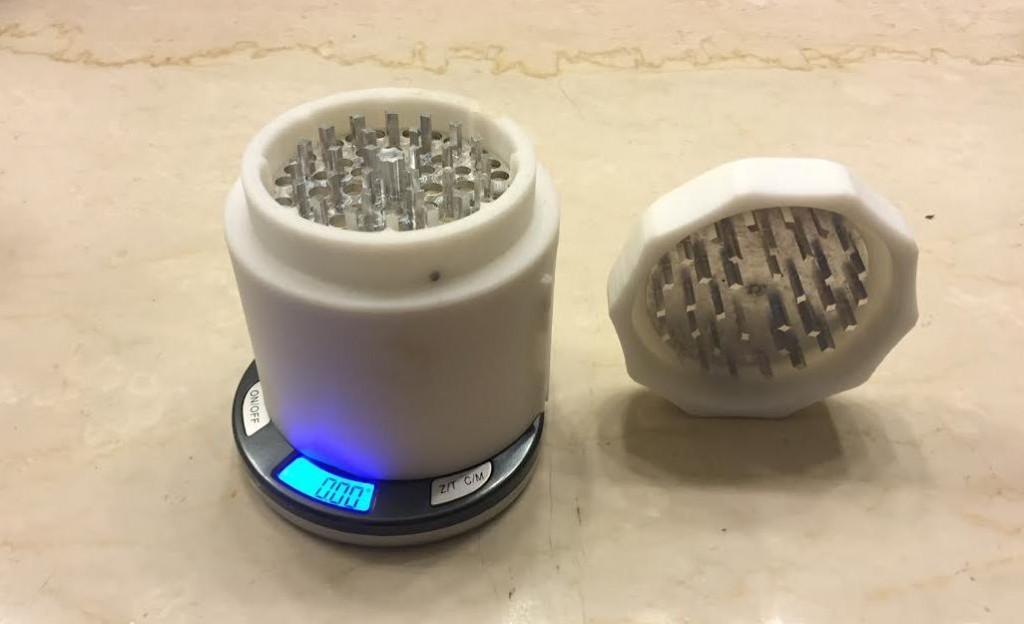One of the greatest benefits of 3D printing is that it allows entrepreneurs, inventors, and innovators to fabricate, test, and prototype product ideas which previously they would have only dreamt of attempting to move forward with. Only a few years ago, it was almost impossible for individual inventors to cheaply and effectively prototype an idea that popped into their heads. The prices of injection molded parts are just ridiculous, and most of the time this priced these individuals out of potentially creating a multi-million dollar product.
For one young man, from Jupiter, Florida, named Josh Camitta, this wasn’t the case, simply because he discovered that 3D printing could provide him with answers that previous generations simply could not come up with.
“The product I have created is called The Grale; The first ever handheld vegetative (herbal) processor and weighing unit,” Camitta tells 3DPrint.com. “Once awarded the patent for this grinder/scale apparatus, I became highly motivated to take this project to the next level.”
Camitta’s apparatus could certainly be quite the useful device for chefs, cooks, and food vendors alike. It was just getting this product to market that was the challenging part. It all started with the desire and need to create a working prototype, and that’s when Anthony Dichi of 3D Printing Expert, Inc. came to the aid.
The Grale features an optimized grinding process with two sets of aluminum CNC milled teeth. A user is required to choose their desired herb or vegetative material. It is then placed into the device, where it is ground before falling through to the next chamber. Food such as herbs, coffee, spice, etc. may be used in raw form. When the material/food falls into the chamber, it is simultaneously weighed.
“For this weighing process the material is collected on what we call the reservoir tray,” explained Camitta. “From here the user has many options. One option is to simply unscrew the top and pinch out the desired portion. Alternatively, you could opt to use the small door (EZ-Pour Technology) which allows the operator to simply swing open a magnetized door, enabling the material to pour out, like a tea kettle. Additionally, one can simply open the larger door and remove the entire reservoir tray for easy access and control.”
Camitta originally was prototyping his design using stereolithography 3D printing technology, but found that it was really quite expensive, inefficient, and restrictive for his purposes. So when he found Dichi, he was greatly relieved. Dichi was able to print out a whole swath of parts quickly and inexpensively, allowing Camitta to better understand how his device would function and fit together.
“The combination of a strong engineer (Anthony) and the technology of a 3-D printer, made making small adaptations and changes a fluid part of the prototype process,” says Camitta. “This has enabled my project to continue to progress with both confidence and pace as it moves towards completion.”
This is just one more shining example of how 3D printing is allowing the innovators of the world test the feasibility of their inventions using a really tangible means of production.
What do you think about Camitta’s invention, and the potential that 3D printing has in allowing future and current inventors to better test their theories and ideas? Discuss in the 3D printed Grale forum thread on 3DPB.com.
